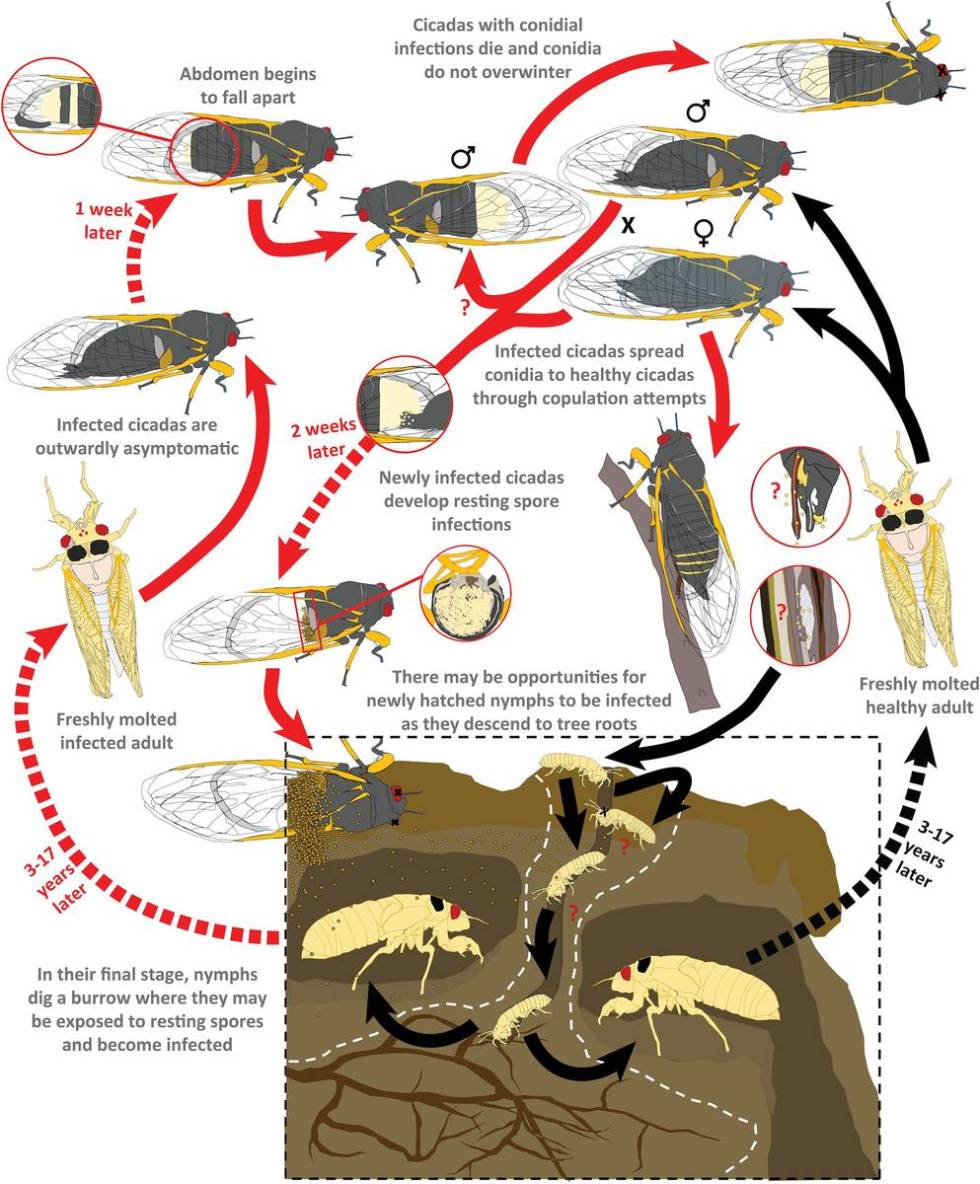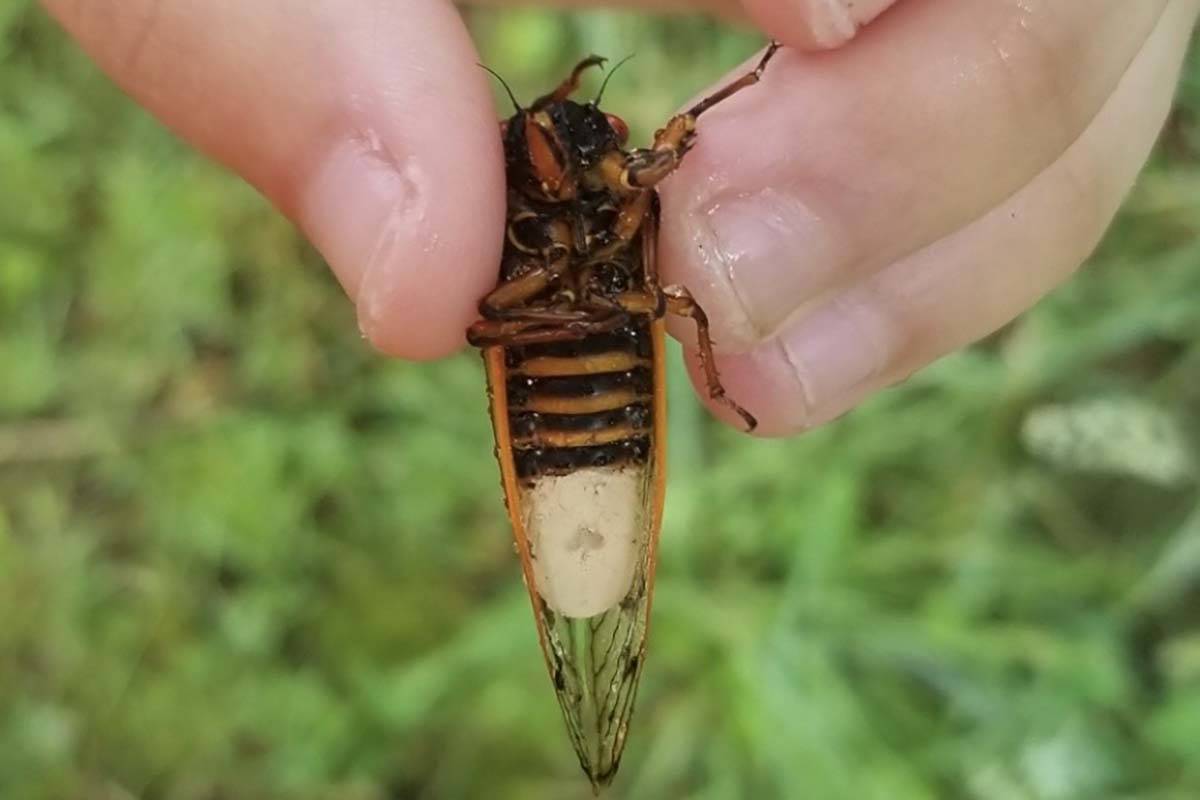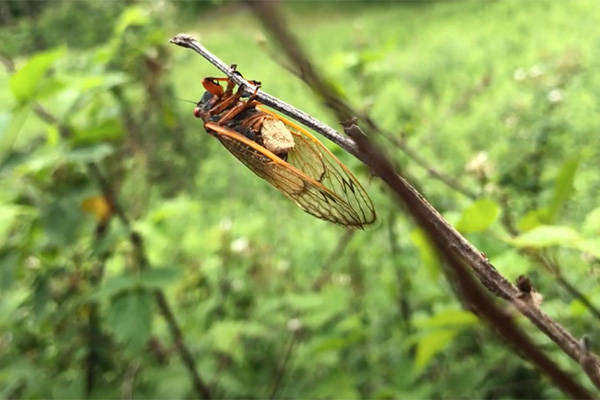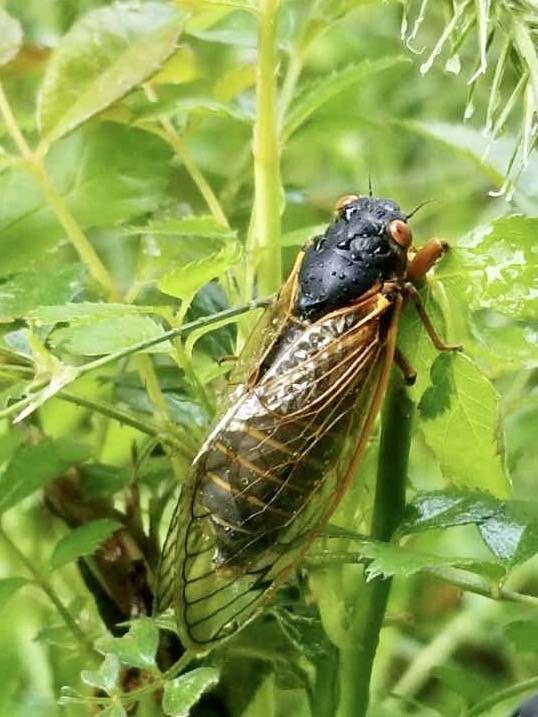Zombie cicadas haven’t been found in Nevada. Yet.
A “mind-control” fungus found in cicadas manipulates the insects into “zombies” that spread fungal spores, according to new research.
The fungus, Massospora, can destroy and replace a third of a cicada’s body with fungal tissue without killing it, leaving it functional enough to spread spores, according to West Virginia University-led research published in the scientific journal PLOS Pathogens.
Many questions remain about how the fungus functions, though, according to the lead author of the study, post-doctoral researcher Brian Lovett with the Davis College of Agriculture, Natural Resources and Design.
The fungus uses well-known chemicals, an amphetamine or a hallucinogenic compound found in psychedelic mushrooms, Lovett said, but it’s not clear how those chemicals are produced.
Cicadas change their behavior when infected to increase spread of the fungus; infected male cicadas will flutter their wings like females to attract unsuspecting males and infect them. They can also spread the fungus just by walking and flying around, sloughing spores as they move.
The fungus life cycle is synchronized with cicadas and has a second stage, infiltrating the soil where cicadas reproduce and infecting the next generation.
Studying this spooky fungus is more illuminating than just learning about cicadas, Lovett said.
Humans don’t have an abdomen-replacing fungus, he said, “but understanding how they evolved and the mechanisms for their weird lifestyle, we can then try to apply those broad principles to pathogens that are more relevant to us.”
Such information could help humans understand and control infection in agriculture and public health.
Cicada populations in the United States are healthy, and the fungus isn’t likely to devastate populations.
Nevada state entomologist Jeff Knight says it’s unlikely that the fungus will make its way to Nevada.
“I would think it would be very unlikely that it would ever get here,” Knight said. “And if it did get here, it would probably be a long time before we ever noticed it.”

Knight didn’t rule out the possibility that the fungus is already here and no one has found it yet. He said if anyone thinks he or she may have seen it in Nevada, he would be interested in hearing about it and getting a sample.
Massospora is specific to cicadas, and it’s not harmful to humans or other animals. It’s also species-specific; Nevada has different cicadas than those on the East Coast, and Nevada cicadas would probably have a different version of the fungus if they have it at all. The fungus is so specialized that it relies on the survival of cicadas as a species to survive; if cicadas die out, so will the fungus.
“This fungus and the cicadas have been engaged in this evolutionary arms race for a very, very long time, so they’ve sort of reached an equilibrium,” Lovett said. “Even though this fungus is making a decent dent on the population, the cicadas are still reproducing enough to produce the next generation.”
Lovett said that in a year when the cicadas are out in full force, folks who go looking for the fungus will probably find it, as a spongy mass where the insect’s abdomen should be.
“And if you do find it,” he said, “you should send it to us because then we can study it.”
Marina Philip is a 2020 Mass Media reporting fellow through the American Association for the Advancement of Science. Email her at mphilip@reviewjournal.com. Follow her on Twitter at @mureeenuh.

























